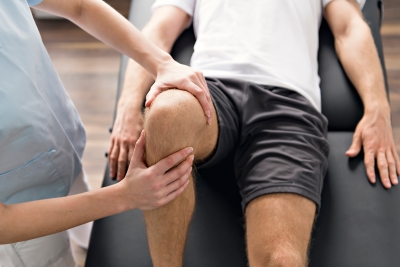
Physical therapy before knee surgery helps the healing process and may produce a more favorable surgical outcome.
A torn or ruptured anterior cruciate ligament (ACL) is one of the most common knee injuries that affect Americans. Especially tough on athletes, ACL tears can ruin sports careers, and they put the people who've received them at higher risk for re-injury in the future. Though not all ACL injuries will require surgery to repair the ligament, some do. For those who will require surgery, studies have shown that a course of focused rehabilitation exercises, also known as "pre-habilitation," or “pre-hab,” are associated with more favorable outcomes after surgery.
It is crucial to note that pre-rehabilitation might not be possible in all cases of a torn ACL, especially those that are characterized by a significant amount of instability in the knee. However, for many others, research shows that engaging in pre-hab can deliver a host of advantages. This is especially true for athletes who want to get back to playing the sports they love after surgery. The overall goal of pre-hab for an ACL injury is simple: to strengthen the muscle groups in the affected leg, thereby elevating the opportunity for a better functional outcome post-ACL surgery.
Studies that have looked at the benefits of pre-hab often show that those who engage in it have better outcomes after surgery. One study, in particular, looked at three groups of patients, generally active young adults between the ages of 18-35, who had sustained a first ACL tear. The first group underwent ACL reconstruction surgery with no pre-hab and then underwent rehabilitation post-surgery. The second group delayed surgery in favor of pre-hab and then underwent ACL surgery followed again by another course of post-surgical rehabilitation. The third group only underwent physical therapy and rehabilitation without surgery.
What the study authors desired to find out was which group's course of action allowed for the most significant reduction in some critical prognostic factors associated with ACL recovery. These prognostic factors are baseline cartilage and meniscus damage, deficits in the ability to extend the knee, and osteochondral lesions. What they found, among other things, was that those who underwent pre-hab and delayed surgery for anywhere from 2-56 months ended up with better Knee Injury and Osteoarthritis Outcomes Scores (KOOS) at five years after the injury. This scoring system is used to help surgeons and orthopedic professionals in their decision making on who is the most suitable candidate for surgery. The KOOS helps us in deciding who might end up with worse long term outcomes after surgery and who might not.
Examples from a different study showed that the group who did pre-hab before surgery outperformed the group that didn't in something called a single-leg hop test. The single-leg hop is a crucial physical evaluation tool often used to inform decisions about an athlete's return-to-sports after an ACL injury.
This study also showed a significant difference in how long it took each of the groups to return to their respective sports after ACL surgery. In the pre-hab group, the average return-to-sport time was 34.2 weeks. This is compared to the group that did not undergo pre-hab and took 42.5 weeks to return-to-play. An eight-week difference may not sound like much to some people, but to competitive athletes, this represents a significant amount of their season lost to rehabbing their injury. These study results also support the concept that physical therapy or pre-hab before ACL surgery can be beneficial to the recovery process.
Whether or not an individual undergoes a course of physical therapy before ACL surgery, physical therapy for approximately 12 weeks is always necessary after surgery in order to help restore function and stability to the knee. Pre-hab and post-surgical physical therapy emphasize flexibility, range of motion, and strength. Once success is achieved in those critical foundational phases, therapy usually moves on to assessments like single-leg hop tests and exercises that are specific to an individual's sport.
Physical therapy is a crucial component of treatment for an ACL injury and should never be overlooked or underappreciated. Especially for athletes, working with a physical therapy program that has experience and expertise in ACL rehabilitation is crucial and can make a significant difference in the quality of recovery as well as the time it takes to recover from an ACL injury.
Sources:
https://www.apta.org/PTinMotion/News/2017/6/19/StudyPrognosticFactors/
